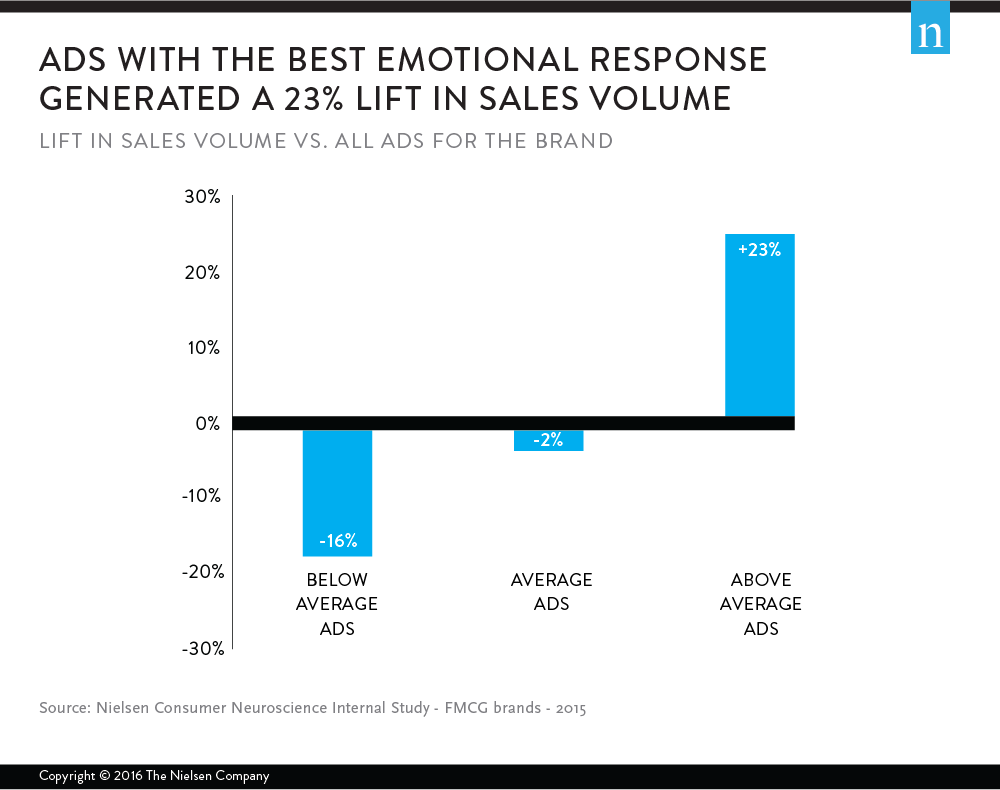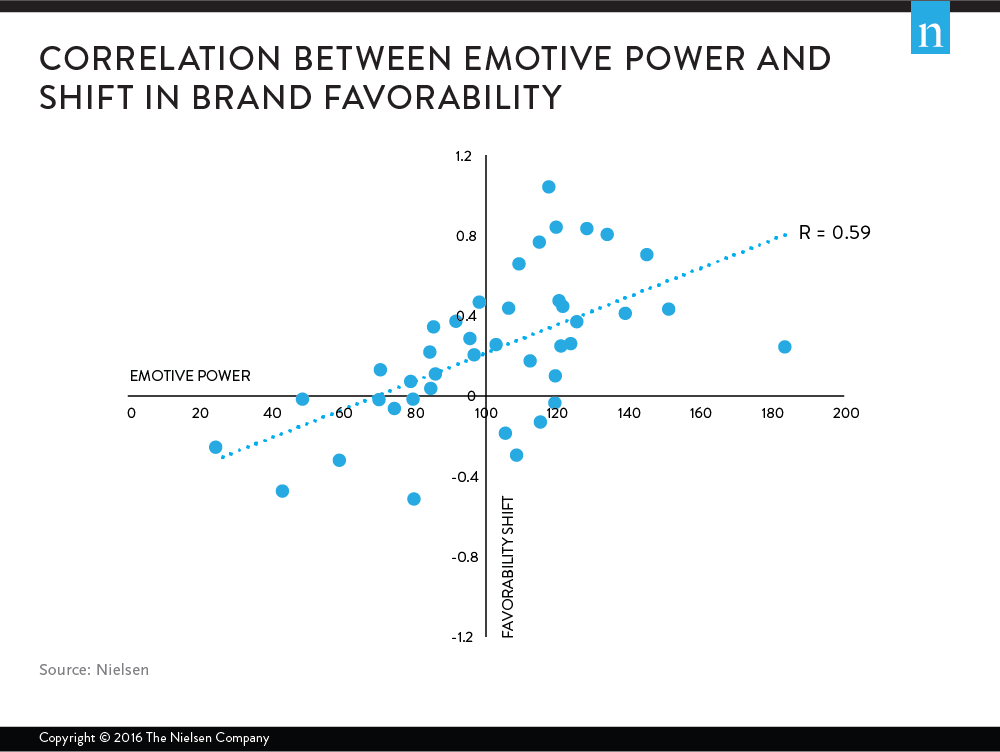Think about that special gift you bought this holiday season. Was it the result of a deliberate cost-benefit analysis or more of an impulse decision? Was it sparked by an ad you saw recently? Did you think back to the message in that ad when you made your purchase or were you driven to it by invisible forces? Did your emotions get the better of you?
It’s no secret that emotions are central to advertising. They’re at the heart of the relationship we have with brands. They drive our nonconscious decisions and play a major role in our conscious decisions, too.
The advertising industry has a long history of measurement solutions based on recall, recognition, intent, consideration, etc. because those metrics are relatively easy to capture and interpret. Those are important measures in their own right, but they’re poor surrogates for measuring the emotional connection that an ad is capable of developing with its viewers.
That’s where recent advances in neuroscience theory and practice come into play: they’re making it possible to dig deeper into how emotions affect our decisions. Today, we can measure neurological and biological reactions (heart rate, sweat, posture, facial reactions, electrical impulses in specific regions of the brain, etc.) with great precision and tie those reactions to the eventual success of an ad campaign. Those techniques have found a home in ad copy testing and the returns can be impressive: Findings from a study of 100 recent ads across 25 brands in the fast-moving consumer goods industry show that ads with above-average scores on a neuroscience-based copy test generated a 23% lift in sales.

And once an ad has launched? For in-market performance measurement, when we need to measure more than one ad at a time in an efficient fashion, we now have innovative survey methods at our disposal that are based on robust behavioral models and can be used to extend the work done in the lab to real-life market situations.
In a seminal cooperative study between industry and academia, researchers were able to use one such survey-based metric to measure the emotive power of in-market commercials. The research found a strong correlation between that metric and shifts in brand favorability—a crucial ROI metric for every campaign.

TV remains one of the most trustworthy sources of advertising. But there’s simply too much clutter these days to neglect the quality of the creative. When marketers use neuroscience measures before launching an ad and pair that effort with survey-based monitoring solutions after launch, they can benefit from a comprehensive scientific framework to measure effectiveness across the ad’s lifecycle.
For additional insight, download the What’s Next: Emotions Give a Lift to Advertising report.



